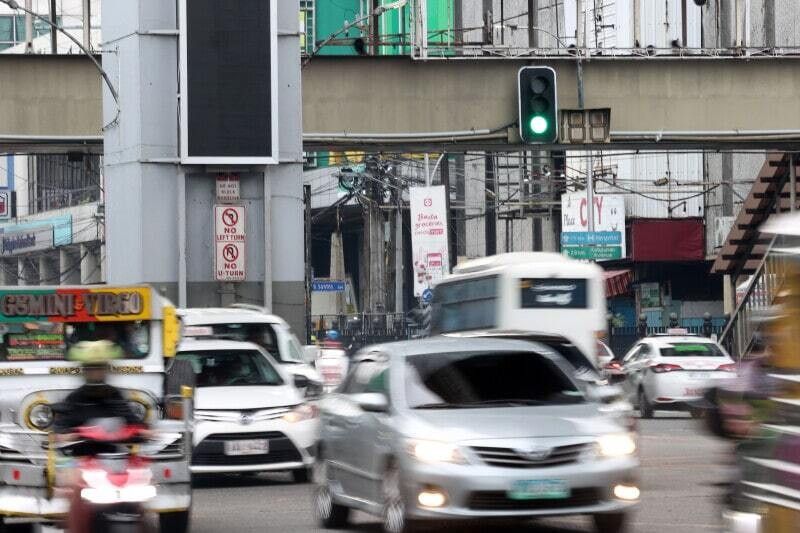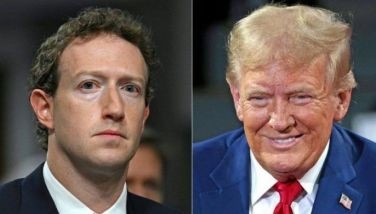Philippine economy slows in Q2 as inflation crimps consumption

MANILA, Philippines — The Philippine economy expanded at a slower pace in the second quarter, as painfully high inflation hit the economy where it hurts the most: consumer spending.
Gross domestic product (GDP) grew 7.4% year-on-year in the April-June period, the Philippine Statistics Authority reported Tuesday. The latest reading was slower compared to the downwardly revised 8.2% expansion recorded in the preceding quarter.
Quarter-on-quarter, the PSA said GDP shrank 0.1%. Dissecting the data, consumer spending, which emerged as the main growth driver last quarter, slowed to 8.6% year-on-year, from 10.1% in the first quarter, as stubbornly high inflation prompts Filipino families to tighten their belts.
From January to July, inflation averaged 4.7% that, experts said, has not yet peaked this year.
“Global headwinds, the imported inflation particularly those from fuel and food, contributed to noticeable slowdown. This is expected to continue in the second half of the year,” said Socioeconomic Planning Secretary Arsenio Balisacan.
A contraction of 0.4% in a services sector, an industry thought to have benefited from easing restrictions, shook growth figures. National statistician Claire Dennis Mapa said the services subsectors that contributed to the plunge were transport and storage, human health and social work, and real estate and human dwelling.
Inflation played a huge role in dampening growth, data showed. As prices of consumer goods and services were zooming in the second quarter — partly due to expensive fuel prices, supply chain disruptions, and a weak peso — consumers were forced to rein in their spending.
Data broken down, household spending shrunk 2.7% on a sequential basis in the second quarter. The PSA reckoned that consumers, based on data they compiled, spent less on transport, restaurants and hotels, and food.
Another indicator that stuck out was the seemingly muted contribution of election spending to growth. In the past election years, GDP recorded fast growth. “As a scientist, that’s quite interesting. Technology of elections has changed. It‘s no longer as labor and cash intensive. These are just speculations that tried to pin down elections,” Balisacan said.
That said, the start of the Bangko Sentral ng Pilipinas’ tightening cycle, which left interest hikes at 3.25% after staying in historic lows for most of the pandemic, were reasons to feel hopeful as Balisacan sees it. The key policy rate were hiked in succession to tame consumer inflation fanned by external headwinds.
“But we should look at these policy changes that there are other longer term considerations. I’d like to believe that the policy changes would have positive effects on the economy,” he said.
Balisacan was confident that the economy would still hit its growth target, at an estimated 6.5-7.5% this year. The NEDA chief noted that to hit the upper range of their forecast the economy needs to grow at an average of 7.2% in the second half. Growth averaged 7.8% year-on-year in the first six months of the year.
Nicholas Antonio Mapa, senior economist at ING Bank in Manila, disagreed with Balisacan’s projection since the country is facing off with multiple threats to growth.
“Today’s GDP report points to full year growth settling at the lower-end of the government’s 6.5-7.5% growth target. The economy is facing the triple threat of accelerating inflation, rising borrowing costs and a relatively high debt-to-GDP ratio,” he said in an emailed commentary.
“Faster inflation, which was last reported at 6.4%, should cap overall household spending while rising interest rates are likely to deter investment outlays. Meanwhile, elevated levels of debt could act as a handicap and mitigate the ability of the national government to provide stimulus in the near term,” ING’s Mapa added.
Domini Velasquez, chief economist of China Banking Corp., said the economy would find it hard to eke out strong growth in the second half. Economic managers said in a briefing months back that growth would slow in this period.
“Early pull back of post-pandemic momentum portends to a worse-than-expected growth outlook for the rest of the year and possibly the next,” she said in an emailed commentary.
“Hence, we estimate a weaker growth, nearer the government’s low-end target of 6.5%,” Velasquez added.
- Latest
- Trending































